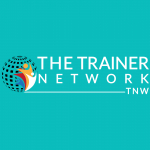Last updated on October 9th, 2020 at 11:39 am
Corporate communications channels are a means through which employers and employees can communicate with each other. It helps keep in check the business goals, daily tasks assigned and other work requirements. Without the proper channel, facilitating communication becomes challenging and also a wasted investment of time.
The types of channels for corporate communications are several. However, it depends on the nature of the message that needs to be conveyed. Many organizations have long used intranet for facilitating interaction among working individuals. The other types used are emails, project management tools, newsletters, chat apps, or even document-sharing tools.
5 Steps to Choose the Right Communication Channels
It is reported that on average, an employee spends about 2.5 hours searching for information circulated by the organization. So, what really matters is to understand how you categorize corporate communications with your employees. It is not enough to have just one type of channel.
Step 1: Identify the Corporate Communication Channels to be Used
This is based on the types of communication you have with your company individuals on a daily basis. If it is news about the awards the company has won or a message the founder wants to share with his employees – a newsletter would be the right corporate communications channel. If it is about sharing task-oriented instructions particularly assigned to a specific department and is required within a set timeline, an email or a project management tool would be the right selection.
Step 2: Nature of conveying Messages depends on the nature of a Company’s Culture
If your organization does not welcome communicating with them at any hour of the day or night, scrap that habit no matter how tempting. There are times when urgent work is required. However, this is the very point; urgent matters should not become a regular item on the daily menu. You are instilling the wrong culture within the company and this badly affects employee retention.
Step 3: Delivering your Message via Multiple Methods
Does your company prefer in-person meetings like individual or team meetings, company-wide or relaxed retreat meetings? Different situations demand different approaches. Other types include – written communication (direct or mass emailing, text or instant messaging) or voice & video messaging (direct phone call or conference call, live or pre-recorded chats).
Step 4: Experiment with New Channels
Trying out new methods of communication can be refreshing. This is because tried and tested methods can sometimes become old-off dusted methods. There are several platforms that make it easier for employees to communicate, encouraging them to stay on par with delivering their work. This holds true especially in these days when remote working demands long-distance coordination.
Step 5: Evaluate the Corporate Communication Channels
Do not keep using channels that appear to be creating miscommunication. The moment you find repeated conflicts arising due to a channel, change the channel and identify one that keeps enhancing productivity.
Channeling corporate communications is very important for the organization. Emphasizing its role gives way to result-oriented and goal-accomplishing means.
Suggested Read:
- Storytelling In Business
- 3 Killer Negotiation Skills to Make you a Better SalesPerson
- How To Let Your Personality Shine Through In Virtual Meetings
- Personal Branding: 3 Steps approach to Embark on a Journey to SUCCESS
- Why Should Your Organization Consider PoSH Training

